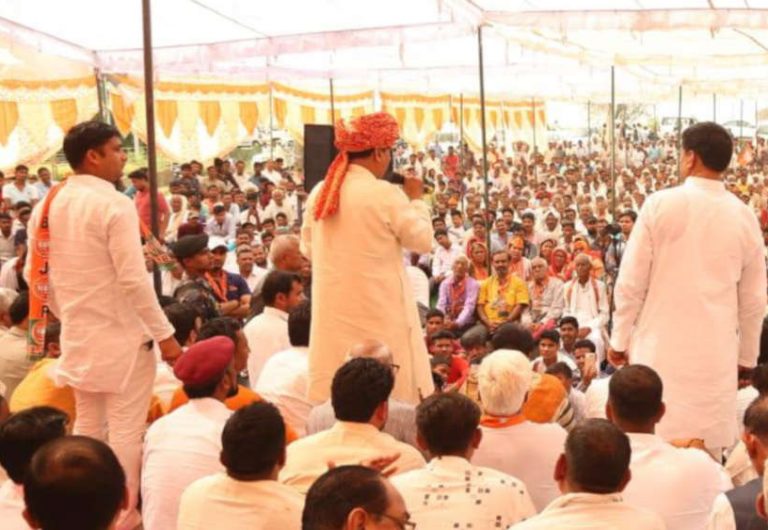Hate Politics, Urban Aspiration Collide In Battle For UP

Gautam Buddh Nagar (Uttar Pradesh): Clouds of dust flew into people’s faces as the next white SUV full of Bharatiya Janata Party (BJP) karyakartas (workers) drove up to the maidan (ground) in Sutyana village, 56 km east of India’s capital.
Gautam Buddh Nagar is not as well known as its urban half, the Delhi suburb of Noida, a land of IT companies and glass-fronted buildings. Sutyana is at the other end of this parliamentary constituency, a space of shrunken farmlands and former farmers. Some were happy to sell their land, others protested when the government tried to acquire it in 2011 to build an expressway, and, more recently, in villages in and around Noida and Jewar town over various government projects including a new airport.
On a recent March day, protesters and party workers gathered for an election rally of union culture minister Mahesh Sharma, BJP member of parliament (MP) from the Gautam Buddha Nagar constituency. Sharma, 59, won 50% of the votes in 2014--a margin of 23.37% over his nearest rival from the Samajwadi Party. He hoped to re-create that result.
It was a BJP yuva morcha, or youth event, and they were getting louder. It was 12:20 pm, mantri-ji was expected any minute. But instead of the 2,500 people anticipated--for whom adequate chairs, microphones, megaphones and posters had been arranged--there were no more than 50.
The next SUV revved up and a leader from an adjoining village walked in, led by a thin drummer boy in a shiny outfit fraying at the edges. He drummed loudly and vigorously. ‘Modiji ki jai ho!’ they shouted, referring to their main vote catcher, Prime Minister Narendra Modi.
With a right-wing Hindu party in power appealing to the majority vote, this is the first of a six-part series that explores the Hindu vote from India’s most important battleground state: UP, home to 80 of 543 Lok Sabha constituencies or 14% of Parliament’s lower house. A state that is 79.7% Hindu and 19.2% Muslim, according to Census 2011, UP is where the Hindu right first gained ground with the demolition of the Babri Masjid in 1992, and the movement to construct a Ram temple in Ayodhya began.
How votes are garnered here in India’s second-poorest state by per capita income, how caste will compete with religion--or a combination of the two--will determine who gets India’s biggest bank of votes. Our journey through the heart of UP during the campaign of 2019 will bring you stories behind the electoral math, as we gauge how religious and caste issues are being presented and how voters anxious for jobs are reacting. [ . . . ]


